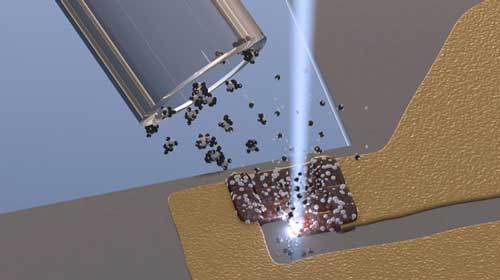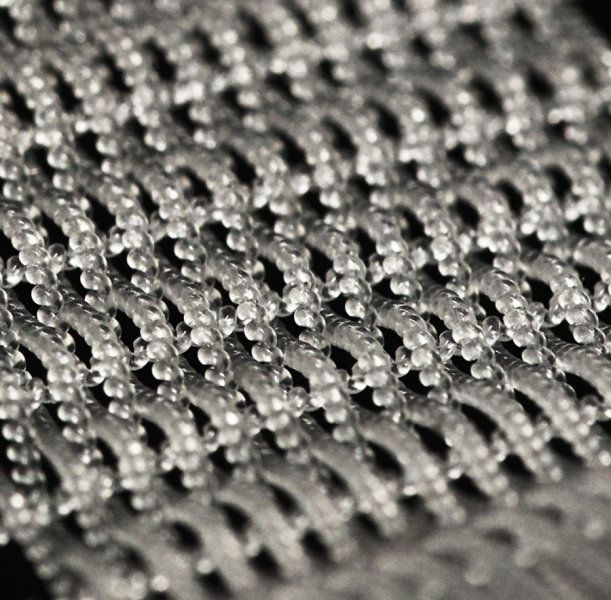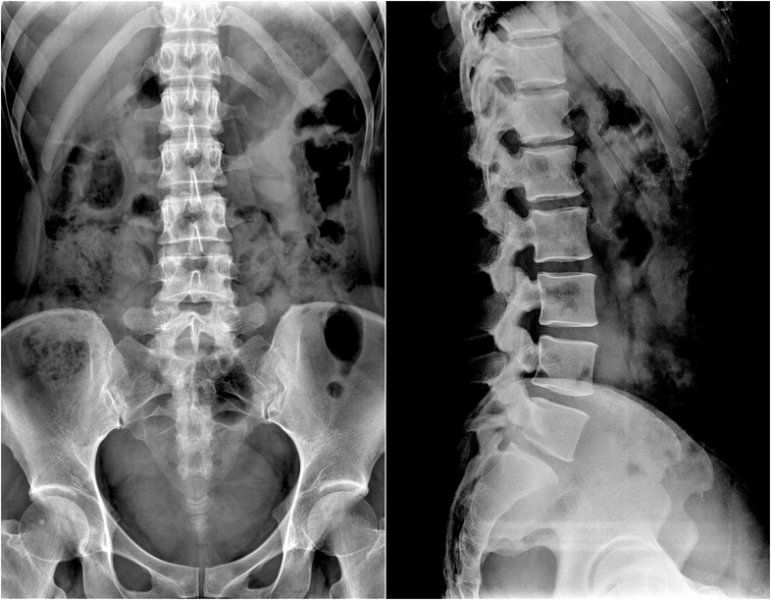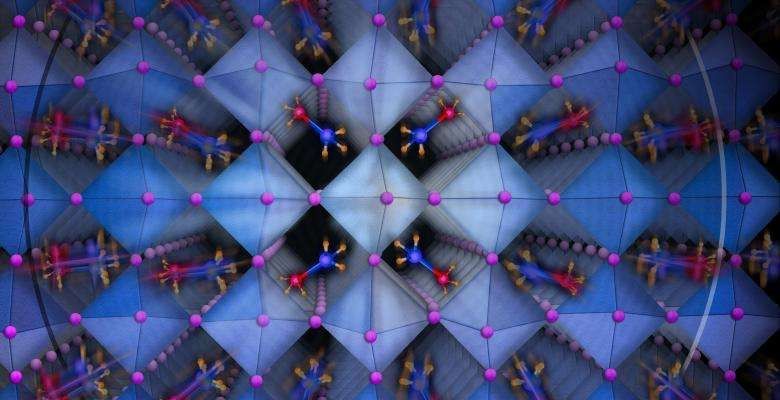Archive for the ‘nanotechnology’ category: Page 258
Sep 28, 2016
First quantum photonic circuit with an electrically driven light source
Posted by Klaus Baldauf in categories: computing, encryption, nanotechnology, quantum physics
Whether for use in safe data encryption, ultrafast calculation of huge data volumes or so-called quantum simulation of highly complex systems: Optical quantum computers are a source of hope for tomorrow’s computer technology. For the first time, scientists now have succeeded in placing a complete quantum optical structure on a chip, as outlined Nature Photonics. This fulfills one condition for the use of photonic circuits in optical quantum computers.
“Experiments investigating the applicability of optical quantum technology so far have often claimed whole laboratory spaces,” explains Professor Ralph Krupke of the KIT. “However, if this technology is to be employed meaningfully, it must be accommodated on a minimum of space.” Participants in the study were scientists from Germany, Poland, and Russia under the leadership of Professors Wolfram Pernice of the Westphalian Wilhelm University of Münster (WWU) and Ralph Krupke, Manfred Kappes, and Carsten Rockstuhl of the Karlsruhe Institute of Technology (KIT).
The light source for the quantum photonic circuit used by the scientists for the first time were special nanotubes made of carbon. They have a diameter 100,000 times smaller than a human hair, and they emit single light particles when excited by laser light. Light particles (photons) are also referred to as light quanta. Hence the term “quantum photonics.”
Continue reading “First quantum photonic circuit with an electrically driven light source” »
Sep 27, 2016
KIT team develops ‘quantum optical structure on a chip
Posted by Karen Hurst in categories: computing, nanotechnology, particle physics, quantum physics
Researchers at the Karlsruhe Institute of Technology say they have developed a quantum photonic circuit with an electrically driven light source. Described as a ‘complete quantum optical structure on a chip’, the development is said to fulfil one condition for the use of photonic circuits in optical quantum computers.
“Experiments investigating the applicability of optical quantum technology have often claimed whole laboratory spaces,” said Professor Ralph Krupke. “However, if this technology is to be employed meaningfully, it must be accommodated on a minimum of space.”
The light source for the quantum photonic circuit is carbon nanotubes which emit single particles of light when excited by a laser. Because they emit single photons, carbon nanotubes are attractive as light sources for optical quantum computers.
Continue reading “KIT team develops ‘quantum optical structure on a chip” »
Sep 27, 2016
Scientists put a new twist on artificial muscles
Posted by Shane Hinshaw in categories: biotech/medical, cyborgs, nanotechnology, robotics/AI
In a perspective article published Sept. 26 online in the Proceedings of the National Academy of Sciences, a team of scientists at UT Dallas’ Alan G. MacDiarmid NanoTech Institute describes the path to developing a new class of artificial muscles made from highly twisted fibers of various materials, ranging from exotic carbon nanotubes to ordinary nylon thread and polymer fishing line.
Because the artificial muscles can be made in different sizes and configurations, potential applications range from robotics and prosthetics to consumer products such as smart textiles that change porosity and shape in response to temperature.
“We call these actuating fibers ‘artificial muscles’ because they mimic the fiber-like form-factor of natural muscles,” said Dr. Carter Haines, associate research professor in the NanoTech Institute and co-lead author of the PNAS article, with research associate Dr. Na Li. “While the name evokes the idea of humanoid robots, we are very excited about their potential use for other practical applications, such as in next-generation intelligent textiles.” Science Based on Ancient Art.
Sep 26, 2016
MIT: Powering up graphene implants without frying cells ~ For the Next Generation of Implants
Posted by Karen Hurst in categories: biotech/medical, health, nanotechnology, particle physics
This computational illustration shows a graphene network structure below a layer of water.
New analysis finds way to safely conduct heat from graphene to biological tissues.
Sep 26, 2016
3D nanoprinting improves performance of atomic force microscopes
Posted by Karen Hurst in categories: 3D printing, nanotechnology
Tiny sensors made through nanoscale 3D printing may be the basis for the next generation of atomic force microscopes. These nanosensors can enhance the microscopes’ sensitivity and detection speed by miniaturizing their detection component up to 100 times. The sensors were used in a real-world application for the first time at EPFL, and the results are published in Nature Communications.

The sensor is made up of highly conductive platinum nanoparticles surrounded by an insulating carbon matrix. (Image: EPFL)
Sep 26, 2016
Graphene nanoribbons show promise for healing spinal injuries
Posted by Shane Hinshaw in categories: biotech/medical, nanotechnology, transportation
The combination of graphene nanoribbons made with a process developed at Rice University and a common polymer could someday be of critical importance to healing damaged spinal cords in people, according to Rice chemist James Tour.
The Tour lab has spent a decade working with graphene nanoribbons, starting with the discovery of a chemical process to “unzip” them from multiwalled carbon nanotubes, as revealed in a Nature paper in 2009. Since then, the researchers have used them to enhance materials for the likes of deicers for airplane wings, better batteries and less-permeable containers for natural gas storage.
Now their work to develop nanoribbons for medical applications has resulted in a material dubbed Texas-PEG that may help knit damaged or even severed spinal cords.
Sep 24, 2016
HOIP’s ~ Columbia Chemists Find Key to Manufacturing More Efficient Solar Cells ~ Is this the Future of Solar?
Posted by Karen Hurst in categories: nanotechnology, policy, solar power, sustainability
In a discovery that could have profound implications for future energy policy, Columbia scientists have demonstrated it is possible to manufacture solar cells that are far more efficient than existing silicon energy cells by using a new kind of material, a development that could help reduce fossil fuel consumption.
The team, led by Xiaoyang Zhu, a professor of Chemistry at Columbia University, focused its efforts on a new class of solar cell ingredients known as Hybrid Organic Inorganic Perovskites (HOIPs).
Their results, reported in the prestigious journal Science, also explain why these new materials are so much more efficient than traditional solar cells—solving a mystery that will likely prompt scientists and engineers to begin inventing new solar materials with similar properties in the years ahead.
Sep 22, 2016
Femtotechnology: A technology that is Beyond Nanotechnology
Posted by Klaus Baldauf in categories: evolution, nanotechnology, particle physics, robotics/AI

Nanotechnology has reshaped the technological discoveries in the recent times. Nanotechnology has enabled the creation and invention of numerous things with wide potentialities. Every field is subject to constant evolution, nanotechnology is no exception. Researchers and scientists who are engaged with nanotechnology have now come up with femtotechnology.
Femtotechnology is widely defined as, “Hypothetical term used in reference to structuring of matter on the scale of a femtometer, which is 10^−15m. This is a smaller scale in comparison to nanotechnology and picotechnology which refer to 10^−9m and 10^−12m respectively.”
Continue reading “Femtotechnology: A technology that is Beyond Nanotechnology” »
Sep 21, 2016
Passive Liquid Flow Can Aid Nanotechnology Development, Study Suggests
Posted by Karen Hurst in categories: computing, engineering, nanotechnology, particle physics
Again organic nature teaches technology.
A new study, inspired by water’s movement from roots to leaves in tall trees, shows that a certain kind of passive liquid flow, where liquids naturally move in response to surface atomic interactions instead of being driven by external forces like pumps, is remarkably strong. By virtually modeling the way atoms interact at a solid surface, College of Engineering and Computer Science researchers suggest that passive liquid flow could serve as a highly efficient coolant-delivery mechanism without the need for pumps. The results, published in Langmuir, also have implications for the development of new nanoscale technology.
















